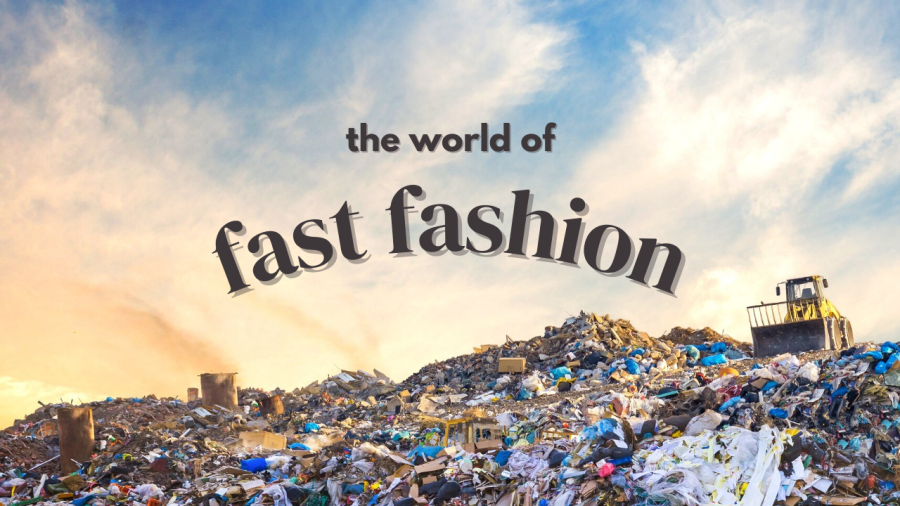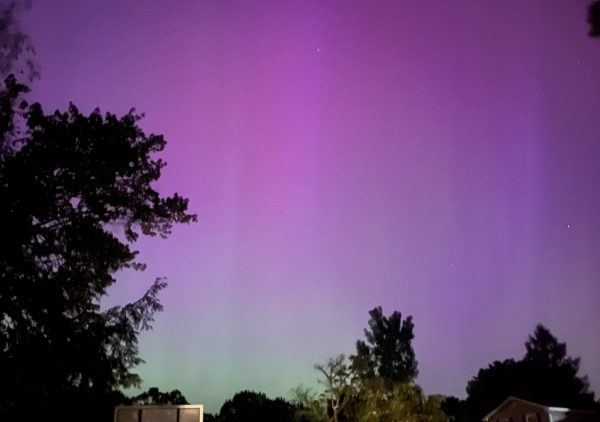The True Cost of Fast Fashion
With the shortening of trend cycles, our obsession with the latest styles comes with a price to the environment.
Although participating in fashion trends is fun at the time, 84% of clothing ends up in landfills.
September 18, 2022
Every year there are fashion trends that seize the market, from the return on scrunchies from the 80’s and denim skirts from the 70’s to animal prints, chunky shoes and Brandy Melville baby-tees.
Far from coincidental, it is a marketing concept called the trend cycle.
The trend cycle occurs when a new style is introduced through runway looks and then makes its way into popular stores such American Eagle, Zara, and Urban Outfitters. Once a social media influencer gets hold of the trend, it skyrockets. Suddenly, there is a boom of that specific product in every online store and everyone is wearing it because of its accessibility.
For a couple months or even a specific season, it seems to be the most popular item on the market. Companies profit, and consumers cannot get enough.
But then the seasons change and the item is no longer trending. Then the cycle starts all over again with high end fashion companies coming out with something new.
Although buying clothing and apparel that are currently trending on social media feels like a good idea at the moment, a month later that once trendy piece of clothing or item could be considered “cringy” or a waste of money.
Because of social media that teenagers, especially, are exposed to, the trend cycle has accelerated, causing particular styles to peak in popularity for a short period of time before quickly going out of style,.
Take jeans styles. For nearly a decade, it seemed that all everyone wore was skinny jeans, until the younger population determined that was no longer in style. Along came the increase in mom jeans, for sale seemingly everywhere and selling out in several stores. Influencers all over the internet were wearing them.
In years past, trends would last for a decade, but now, largely because of social media, trends last for a month before they lose favor. In accordance with how our attention span has decreased due to social media, our commitment to particular fashion trends has grown shorter.
Now that we have fast fashion industries, like Shein, consumers are able to buy trendy, low quality clothes at the lowest price possible. As those clothes go out of style more quickly, we throw away our cheap quality clothing or donate it. In fact, 84 percent of disposed clothes are either burned or end up in landfills. And that does not even include the amount of waste created while making the clothes and the excessive plastic bags used to ship the clothes. The average American throws away up to 80 pounds of clothes a year. New York City produces roughly 3,000 pounds of clothing waste a year.
Although donating clothes to a second hand store is a better option than throwing it away, cheap, once trendy articles of clothing are going to hang on racks in second hand clothing stores, such as Goodwill and Plato’s Closet, because they are not in style anymore.
This fast consumption of buying clothes and then disposing of them is killing the environment. The chemicals used to make these clothes and allow them to be sold for so little damages the environment. Most fast fashion clothing contains Azo dyes, which are cheap, but up to 200 thousand tons of dyes are dumped into the environment each year. Now fashion brands are producing two times as much clothing as they did in the year 2000, but it takes up to 200 years for textiles to decompose in landfills.
Buying into trends and buying new articles of clothing is not the issue. It is being conscious of what companies we as consumers support with our money. This is our only Earth — is it really worth putting the environment in danger for the sake of following trends and being stylish?












